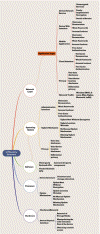|
The widespread
adoption of the Internet of Things (IoT) technologies has
drastically increased the breadth and depth of attack surfaces
in networked systems, providing new mechanisms for the
intrusion. In the context of smart-world critical
infrastructures and cyber-physical systems, the rapid adoption
of the IoT systems and infrastructures without thorough
consideration for the risks and vulnerabilities has the
potential for catastrophic damage to the privacy, safety, and
security of individuals and corporations. While the IoT systems
have the potential to increase productivity, accountability,
traceability, and efficiency, their potential weaknesses are
also more abundant. Here a critical
consideration of the security of the IoT systems as applied to
smart-world critical infrastructures is provided. Particularly,
a detailed assessment of vulnerabilities in IoT-based critical
infrastructures is carried out from the perspectives of applications,
networking, operating systems, software, firmware, and hardware.
In addition, the three key critical infrastructure IoT-based cyber-physical systems, namely the smart
transportation, smart manufacturing, and smart grid are
higlighted. Moreover, a
broad collection of attack examples upon each of the key
applications is provided. Furthermore, a case study is
introduced, in which the impacts of potential attacks on
critical IoT-based systems are assessed, using the smart
transportation system as an example. Finally, a set of best
practices is provided and the necessary steps to enact
countermeasures for any generic IoT-based critical
infrastructure system are addressed. Read more at:

IoT vulnerability
structure.
|